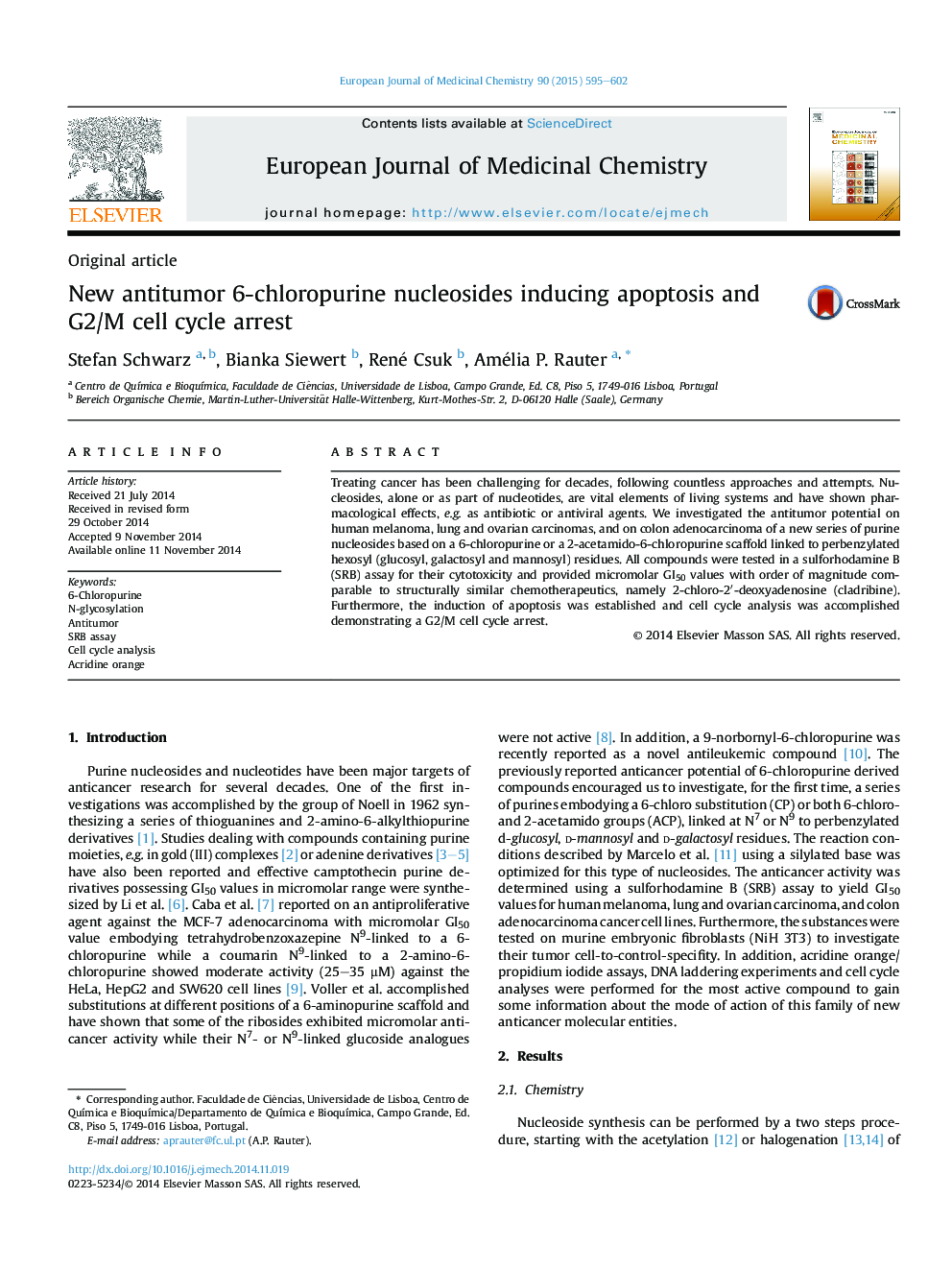| Article ID | Journal | Published Year | Pages | File Type |
|---|---|---|---|---|
| 1395512 | European Journal of Medicinal Chemistry | 2015 | 8 Pages |
•Synthesis of cytotoxic 6-chloropurine nucleosides with antitumor potential.•6-Chloropurine nucleosides that induce apoptosis and G2/M cell cycle arrest.•GI50 values of the same order of magnitude as that of chemotherapeutics cladribine.•More cytotoxic than the antitumor drugs betulinic acid and tamoxifen.•Mannosyl N7-linked to 2-acetamido-6-chloropurine required for the highest activity.
Treating cancer has been challenging for decades, following countless approaches and attempts. Nucleosides, alone or as part of nucleotides, are vital elements of living systems and have shown pharmacological effects, e.g. as antibiotic or antiviral agents. We investigated the antitumor potential on human melanoma, lung and ovarian carcinomas, and on colon adenocarcinoma of a new series of purine nucleosides based on a 6-chloropurine or a 2-acetamido-6-chloropurine scaffold linked to perbenzylated hexosyl (glucosyl, galactosyl and mannosyl) residues. All compounds were tested in a sulforhodamine B (SRB) assay for their cytotoxicity and provided micromolar GI50 values with order of magnitude comparable to structurally similar chemotherapeutics, namely 2-chloro-2′-deoxyadenosine (cladribine). Furthermore, the induction of apoptosis was established and cell cycle analysis was accomplished demonstrating a G2/M cell cycle arrest.
Graphical abstractA series of β-configurated 6-chloropurine nucleosides embodying a hexopyranosyl glycon was prepared. Low micromolar GI50 values were determined on human melanoma, lung and ovarian carcinomas, and colon adenocarcinoma. The most active compound provided data of the same order of magnitude as that of the chemotherapeutic cladribine, induced apoptosis and produced a G2/M cell cycle arrest.Figure optionsDownload full-size imageDownload as PowerPoint slide
